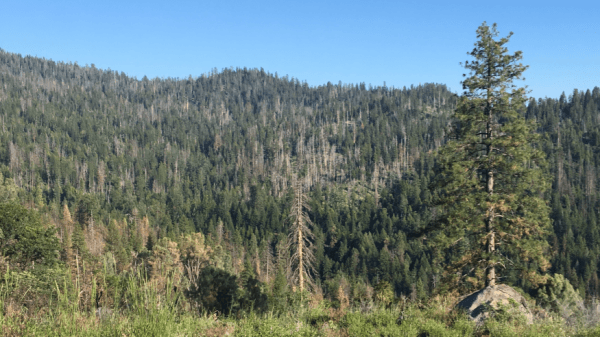New research conducted by scientists at The University of New Mexico suggests climate-driven tree mortality and fuel aridity are increasing fuel availability in forests leading to record-breaking wildfires in size, spread and plume formation.
In North America, wildfire activity has been increasing in large part due to climate change, which is increasing the amount of energy stored in biomass that can be released as heat during a wildfire. Drought stress, insect outbreaks, and temperature increases have caused large areas of tree mortality and rising temperatures are drying out forest fuels, making them more available to burn. The amount of energy stored in forests that is available for release from fire depends on the amount of water stored in live and dead biomass, which acts as a regulator on the amount and rate of energy release. Fuel moisture of dead biomass is more responsive and fire-prone with increasing temperature than live biomass and the combined effects of tree mortality and high temperature could be responsible for the substantial energy release that has characterized modern wildfires.
The research, Climate-driven tree mortality and fuel aridity increase wildfire’s potential heat flux, conducted by UNM scientists Marissa Goodwin and Matthew Hurteau, was published recently in Geophysical Research Letters. The study, which considered tree mortality as a result of climate change and an increase in fuel aridity, used temperature and fuel moisture data for both live and dead trees to examine climate-driven changes in fuel moisture content over the past three decades. The scientists also calculated the changes in energy release (energy release component and fire radiative energy) from two forests that experienced drought and bark beetle mortality and subsequently burned by wildfires during the 2020 fire season in the western United States.
Read more at: University of New Mexico
In the Sierra National Forest, an estimated 36 million trees have died from drought and bark beetle mortality over the past five years. This is approximately 25% of the trees in the Sierra National Forest. In the area where the creek fire burned, a CAL FIRE summary reported estimates of 80% tree mortality. (Photo Credit: University of New Mexico).


